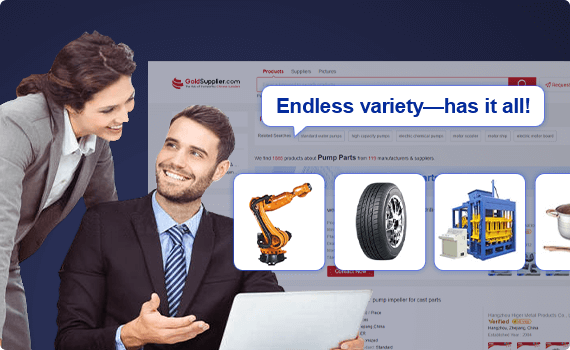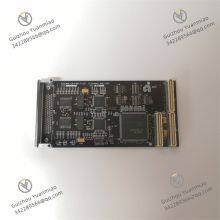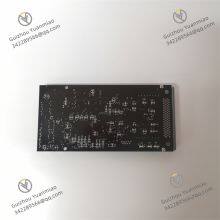Material
Other, Global universal model
Condition
Other, Global universal model
Task
Other, Global universal model
Mathematical Model
Other, Global universal model
Signal
Other, Global universal model
Customized
Non-Customized
Structure
Other, Global universal model
Operating temperature
-0℃ to 60℃
Humidity
0% - 95% (non-condensing)
Dimensions
10cm×10cm×5cm
I. Overview
AMAT 0100-71267 is an industrial control module that plays a pivotal role in the process of industrial automation, especially in the semiconductor manufacturing industry, where it is regarded as a core component ensuring precise and efficient production operations. Applied Materials, with its profound technical accumulation and accurate grasp of industrial scenarios, has endowed this module with many excellent performances, enabling it to cope with complex and harsh industrial environments with ease.
In the complex process of semiconductor manufacturing, from precise wafer preparation to fine chip packaging and testing, AMAT 0100-71267 is deeply involved. It is responsible for accurately controlling the operating parameters of various equipment, ensuring that each production step meets extremely high precision standards, thereby guaranteeing the quality and yield of semiconductor products. At the same time, in other industrial automation scenarios, such as product counting and signal processing in automated production lines, it also contributes to improving production efficiency and optimizing production processes with its own characteristics.

II. Technical Parameters
Power-related Parameters
Input voltage range: Supports a wide voltage input, covering 110V~240V AC. This design enables it to easily adapt to industrial power supply systems in different regions and power environments, greatly improving the versatility and applicability of the product, and reducing installation and commissioning troubles caused by voltage adaptation issues.
Output voltage: Stably outputs 24V DC, providing reliable and adaptive power support for various connected sensors, actuators and other equipment, ensuring the stable operation of downstream equipment.
Maximum power: The maximum power of the module can reach 100W. While meeting the power consumption requirements of normal operation of the equipment, a certain power redundancy is reserved to cope with instantaneous current impacts or high-load working conditions, ensuring the stability and reliability of the system operation.
Power consumption: Under normal working conditions, the power consumption is less than 10W, showing good energy efficiency, which helps reduce energy costs in industrial production and conforms to the current industrial development trend of green energy conservation.
Physical Specification Parameters
Dimensions: The overall design is compact, with length, width and height of 10cm×10cm×5cm respectively. The small size means it does not occupy much space inside the control cabinet or equipment during installation, making it particularly suitable for industrial equipment with compact space layout and easy to be flexibly integrated into various industrial systems.
Weight: The weight is only about 1kg. The lightweight feature not only facilitates transportation, but also reduces the burden on operators during equipment installation and maintenance, lowers potential risks caused by moving heavy objects, and improves work efficiency.
Material: The shell is made of stainless steel, which has good mechanical strength and corrosion resistance. It can effectively resist erosion from unfavorable factors such as dust, moisture and corrosive gases in industrial sites, ensuring the module operates stably for a long time in harsh environments and prolonging the service life of the equipment.
Temperature Adaptability Parameters
Operating temperature range: The operating temperature range is 0°C to 60°C, which can adapt to environments from conventional indoor environments to some industrial workshops with certain temperature changes. Whether it is a relatively constant temperature electronic manufacturing workshop or an ordinary industrial plant with certain temperature fluctuations, it can maintain stable performance and keep the equipment running normally.
Storage temperature range: The storage temperature range is wider, from -40°C to 85°C (non-condensing environment). This means that even under extreme storage conditions, such as cold warehouses or high-temperature outdoor temporary storage environments, the module performance will not be damaged by temperature, ensuring the stability of the product during storage and transportation.
Interface-related Parameters
Number of channels: Equipped with 8 channels, providing sufficient data paths for data collection and signal transmission. It can connect multiple sensors or actuators at the same time, meeting the demand for multi-signal parallel processing in complex industrial control scenarios.
Interface type: There are 8 PMC card interfaces. This type of interface has good compatibility and expandability, facilitating users to flexibly insert PMC cards with different functions according to actual needs, such as analog input/output cards, digital acquisition cards, etc., to realize customized upgrading of module functions.
Communication interface: Supports RS-232/422/485 interfaces, which can seamlessly connect with devices with corresponding serial interfaces for stable data communication; at the same time, some models may also support network communication protocols such as Modbus TCP/IP and Ethernet/IP, facilitating access to industrial Ethernet, building large-scale industrial automation networks with upper computer monitoring systems and other automation equipment, and realizing remote monitoring and centralized management.

III. Functional Features
Powerful Data Processing and Control Functions
Data collection and conversion: The module has strong data collection capability, which can quickly and accurately collect real-time production data from various sensors, such as temperature sensors, pressure sensors, flow sensors, etc. And it can efficiently convert the collected analog signals into digital signals for subsequent data processing and analysis, providing a data basis for precise control of the production process.
Signal processing and analysis: It conducts in-depth processing and intelligent analysis of the collected data. Using built-in algorithms and logic programs, it can identify information such as abnormal fluctuations and trend changes in the data, timely detect potential problems in the production process, such as abnormal equipment operation and deviation of process parameters, and output corresponding control instructions according to preset rules to realize self-regulation and optimization of the production process.
Control instruction output and execution: According to the processing results, it precisely controls the actions of the actuators, such as controlling the start-stop and speed regulation of motors, controlling the opening and closing status of valves, etc., to realize precise control of the automated production process, ensure that industrial production runs stably in accordance with preset process requirements, and guarantee the consistency and stability of product quality.
Excellent Reliability and Stability
High-quality components and advanced craftsmanship: At the hardware level, high-quality electronic components are selected and undergo strict screening and testing processes to ensure that each component can work stably under complex working conditions. At the same time, advanced manufacturing processes, such as high-precision SMT technology and multi-layer circuit board design, are adopted to improve the electrical performance and anti-interference ability of the module, ensuring product reliability from the source.
Perfect protection mechanisms: Built-in multiple protection mechanisms, such as overvoltage protection, overcurrent protection, short-circuit protection, etc., which can effectively deal with abnormal situations such as power fluctuations and electrical faults that may occur in industrial sites, avoid damage to the module due to external factors, ensure continuous and stable operation in harsh industrial environments, reduce production interruptions caused by equipment failures, and improve production efficiency.
Good Compatibility and Expandability
Device compatibility: It has excellent compatibility. It not only can perfectly adapt and work collaboratively with a variety of AMAT equipment, but also can interconnect with industrial automation equipment of other brands, such as Allen Bradley, Rockwell, Schneider, etc., facilitating users to upgrade equipment or expand systems on the basis of existing industrial systems, and reducing system integration costs and difficulties.
Functional expandability: The modular design architecture endows the module with strong expansion capability. Users can conveniently insert additional digital input, analog input, temperature modules or pulse modules according to actual project needs, easily realizing customized expansion of functions, and meeting the needs of control system function upgrading due to changes in industrial production scale and process improvement at different stages.
Convenient Communication Functions
Multi-protocol communication support: Thanks to the support of multiple mainstream communication protocols, such as Modbus TCP/IP, Ethernet/IP, etc., AMAT 0100-71267 can be seamlessly integrated with other equipment in the industrial network. On the one hand, it can upload equipment operating status, production data, etc. to the upper computer system of the monitoring center in real time, so that operators can clearly understand the equipment operating status remotely through the upper computer software and find potential problems in time; on the other hand, it can quickly receive control instructions from the upper computer, such as modifying equipment operating parameters, starting or stopping equipment, etc., realizing remote control and management, and greatly improving the automation and intelligence level of industrial production.
Remote monitoring and management: Through network communication functions, users can centrally monitor and manage industrial equipment distributed in different regions in the remote monitoring center, breaking geographical restrictions, and realizing visual and intelligent management and control of the production process. This not only improves management efficiency, but also can timely respond to equipment failures and abnormal situations, reducing production losses.












































